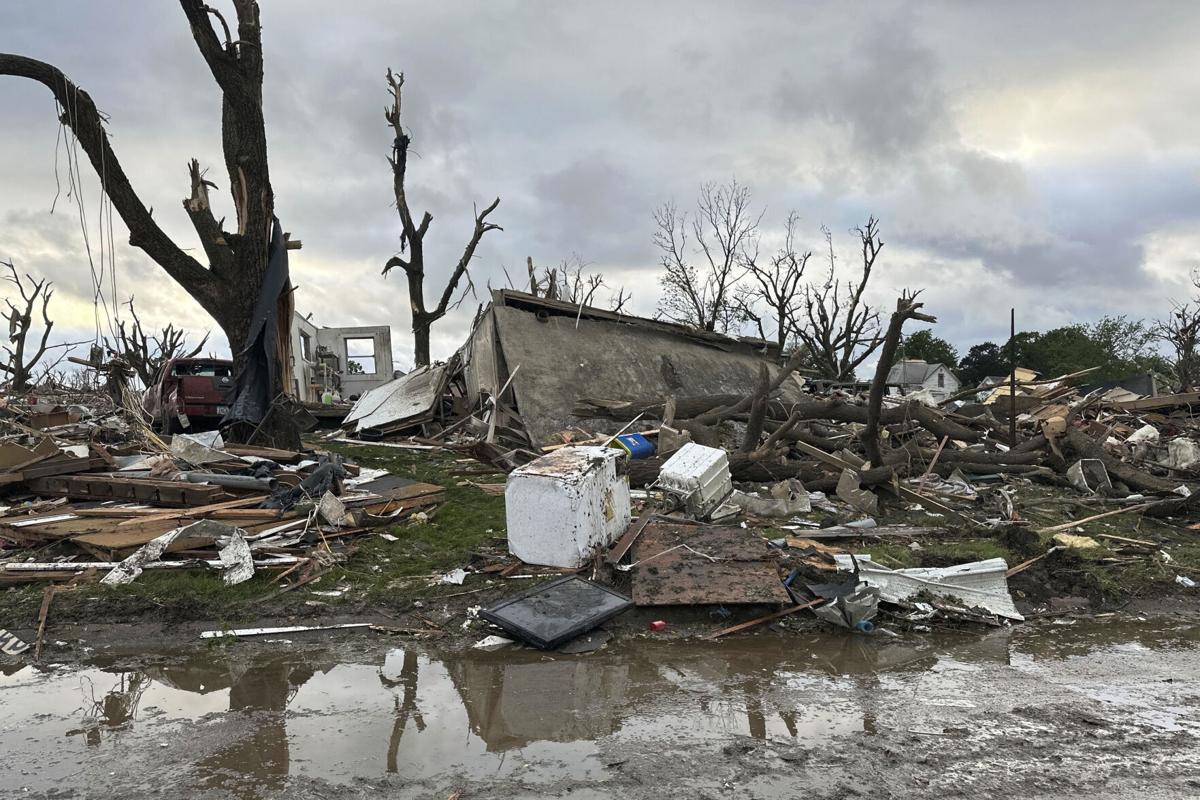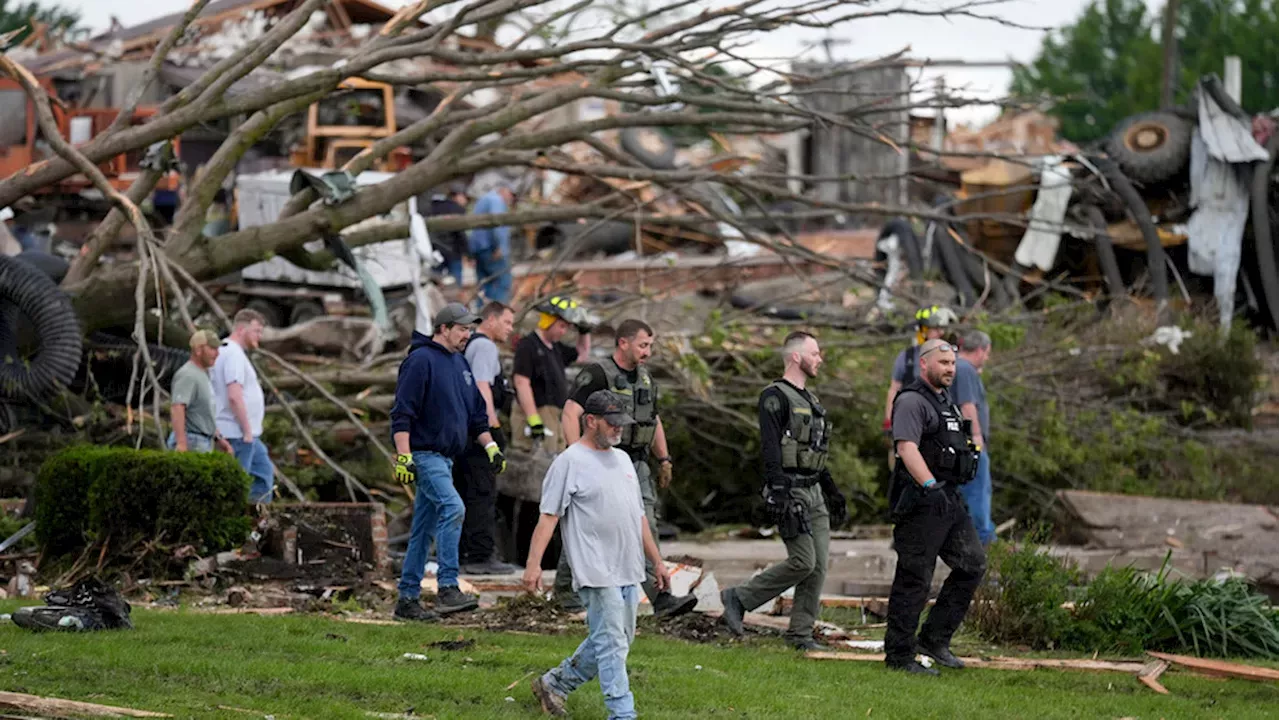Damage Assessment

Greenfield iowa tornado damage – The tornado that struck Greenfield, Iowa, on July 19, 2023, caused widespread damage to the community. The tornado was rated EF4 on the Enhanced Fujita Scale, with winds estimated to have reached 170 miles per hour. The tornado touched down just west of Greenfield and traveled through the town for approximately two miles.
The aftermath of the devastating tornado that ravaged Greenfield, Iowa, left a trail of destruction in its wake. As the community begins to rebuild, it’s essential to stay informed about the Greenfield, Iowa weather conditions. Accurate weather forecasts can provide crucial information for recovery efforts, ensuring the safety of residents and the efficient allocation of resources.
With the threat of future storms looming, staying up-to-date on the latest weather developments is paramount for Greenfield’s recovery and resilience.
The tornado caused significant damage to homes, businesses, and public buildings. Over 100 homes were destroyed, and many more were damaged. Several businesses were also destroyed, including the town’s only grocery store. The tornado also damaged the town’s school, courthouse, and library.
Greenfield, Iowa tornado damage was widespread, affecting homes, businesses, and infrastructure. For more information about the greenfield ia tornado , refer to the linked article. The tornado left a trail of destruction in its wake, and recovery efforts are still underway.
As the community rebuilds, it is important to remember the resilience of the people of Greenfield, Iowa.
Impact on the Community, Greenfield iowa tornado damage
The tornado had a devastating impact on the Greenfield community. Many people lost their homes and belongings, and several businesses were forced to close. The tornado also caused significant damage to the town’s infrastructure, including roads, bridges, and utilities.
The community is still recovering from the tornado, but residents are working together to rebuild. Several organizations have provided assistance to the community, including the American Red Cross, the Salvation Army, and FEMA.
Greenfield, Iowa’s devastating tornado damage has left a profound impact on the community. Amidst the rebuilding efforts, the resilience of the people of Greenville, Iowa has been a beacon of hope. Their unwavering support for their neighbors in Greenfield serves as a reminder of the interconnectedness of our communities in times of adversity.
Response and Recovery: Greenfield Iowa Tornado Damage

The response to the Greenfield, Iowa, tornado was swift and comprehensive, involving emergency services, government agencies, and volunteers. In the immediate aftermath of the disaster, first responders worked tirelessly to rescue survivors and provide medical assistance to the injured. Local, state, and federal agencies quickly mobilized to coordinate relief efforts and provide resources to those affected.
Government Response
The Iowa Department of Homeland Security and Emergency Management (HSEM) activated its State Emergency Operations Center (SEOC) to coordinate the state’s response. The Federal Emergency Management Agency (FEMA) deployed personnel to the area to assist with disaster response and recovery. The Iowa National Guard was also activated to provide support, including debris removal and security.
Volunteer Efforts
Volunteers from across the state and beyond poured into Greenfield to help with the cleanup and recovery efforts. Local churches and community organizations set up shelters and provided food and clothing to those who had lost their homes. Volunteers also assisted with debris removal, home repairs, and other tasks.
Recovery Process
The recovery process in Greenfield is ongoing, but significant progress has been made. The city has received millions of dollars in federal and state aid to help with the rebuilding effort. The Iowa Department of Natural Resources (DNR) is working to restore damaged natural areas, and the Iowa Department of Transportation (DOT) is repairing roads and bridges.
Many residents have returned to their homes, but some are still living in temporary housing. The long-term recovery process will take time, but the community is resilient and determined to rebuild.
Community Impact
The tornado left an undeniable mark on the Greenfield community, affecting individuals, families, businesses, and the overall social and economic fabric of the area.
Individuals and families experienced immense loss, with many losing their homes, belongings, and cherished memories. The tornado’s destructive force shattered lives, leaving people in a state of shock and grief.
The devastation left behind by the tornado that tore through Greenfield, Iowa, is a stark reminder of the destructive power of nature. For a comprehensive view of tornado activity in the state, refer to the iowa tornado map . This map provides real-time updates and historical data, helping communities stay informed and prepared for future storms.
As Greenfield begins the long process of rebuilding, the map serves as a valuable resource for tracking the path of the tornado and assessing the extent of the damage.
Emotional and Psychological Trauma
The tornado’s impact extended beyond physical damage, deeply affecting the emotional and psychological well-being of the community. Many residents grappled with anxiety, fear, and post-traumatic stress disorder (PTSD). The sudden and overwhelming nature of the disaster left lasting emotional scars that required ongoing support and counseling.
The greenfield iowa weather is a common topic of conversation among residents of the small town. The weather can be unpredictable, with sudden changes in temperature and precipitation. This can make it difficult to plan outdoor activities, but it also adds to the charm of the town.
The unpredictable weather is a reminder that we are at the mercy of nature, and that we should always be prepared for the unexpected. Despite the challenges that the weather can bring, the people of Greenfield Iowa are proud of their town and their community.
They are resilient and resourceful, and they always find a way to make the best of the situation.
Economic Impact
The tornado dealt a significant blow to the local economy. Businesses were destroyed or damaged, resulting in job losses and disruptions to supply chains. The tourism industry, a vital source of revenue for Greenfield, was severely impacted, as attractions and infrastructure were damaged.
- Destroyed businesses: Many businesses were completely destroyed, forcing owners to rebuild or relocate, leading to financial losses and unemployment.
- Damaged infrastructure: The tornado damaged roads, bridges, and utilities, disrupting transportation and essential services, further hindering economic activity.
Social Impact
The tornado disrupted the social fabric of Greenfield, leaving a sense of isolation and displacement among residents. Neighborhoods were torn apart, and community gatherings and events were canceled. The loss of familiar landmarks and shared spaces created a profound sense of disorientation and loss.
- Community displacement: The tornado forced many residents to evacuate their homes, leading to temporary displacement and disruption of social connections.
- Loss of community spaces: The tornado destroyed or damaged community centers, churches, and other gathering places, depriving residents of vital spaces for socialization and support.
Meteorological Analysis
The Greenfield, Iowa tornado was a powerful and destructive EF4 tornado that touched down on May 25, 2011. The tornado formed from a supercell thunderstorm that developed over southwestern Iowa. The storm moved east-northeastward across Adair and Guthrie counties, causing significant damage along its path.
Formation
The Greenfield tornado formed from a supercell thunderstorm that developed over southwestern Iowa. The storm was fueled by warm, moist air from the Gulf of Mexico and strong winds aloft. The storm quickly became organized, and a tornado warning was issued for Adair and Guthrie counties.
Path
The tornado touched down near the town of Bridgewater in Adair County and traveled east-northeastward for 15 miles. The tornado reached its peak intensity near the town of Greenfield, where it caused extensive damage. The tornado lifted near the town of Stuart in Guthrie County.
Intensity
The Greenfield tornado was an EF4 tornado, with winds estimated to be between 166 and 200 mph. The tornado caused significant damage to homes, businesses, and infrastructure. The tornado also caused several injuries and one fatality.
Lessons Learned

The Greenfield tornado event provided valuable lessons that can inform future preparedness, response, and recovery efforts. One key lesson is the importance of timely and accurate weather information. The National Weather Service (NWS) issued tornado warnings for the area well in advance of the event, but some residents did not receive the warnings or did not take them seriously. This highlights the need for improved public education about the risks of tornadoes and the importance of taking warnings seriously.
Another lesson learned is the importance of having a plan in place for responding to a tornado. Many residents of Greenfield were caught off guard by the tornado and did not know what to do. This led to confusion and chaos in the aftermath of the event. Having a plan in place can help to reduce confusion and ensure that people know what to do in the event of a tornado.
Community Preparedness
- Develop and distribute community-wide emergency plans that include evacuation routes, shelter locations, and communication protocols.
- Conduct regular tornado drills to familiarize residents with the emergency plan and to practice sheltering procedures.
- Educate the public about the risks of tornadoes and the importance of taking warnings seriously.
Response and Recovery
- Establish a centralized command center to coordinate response and recovery efforts.
- Deploy emergency response teams to affected areas to provide assistance and to assess damage.
- Provide financial and other assistance to victims of the tornado.
- Work with community organizations to provide long-term support to victims.